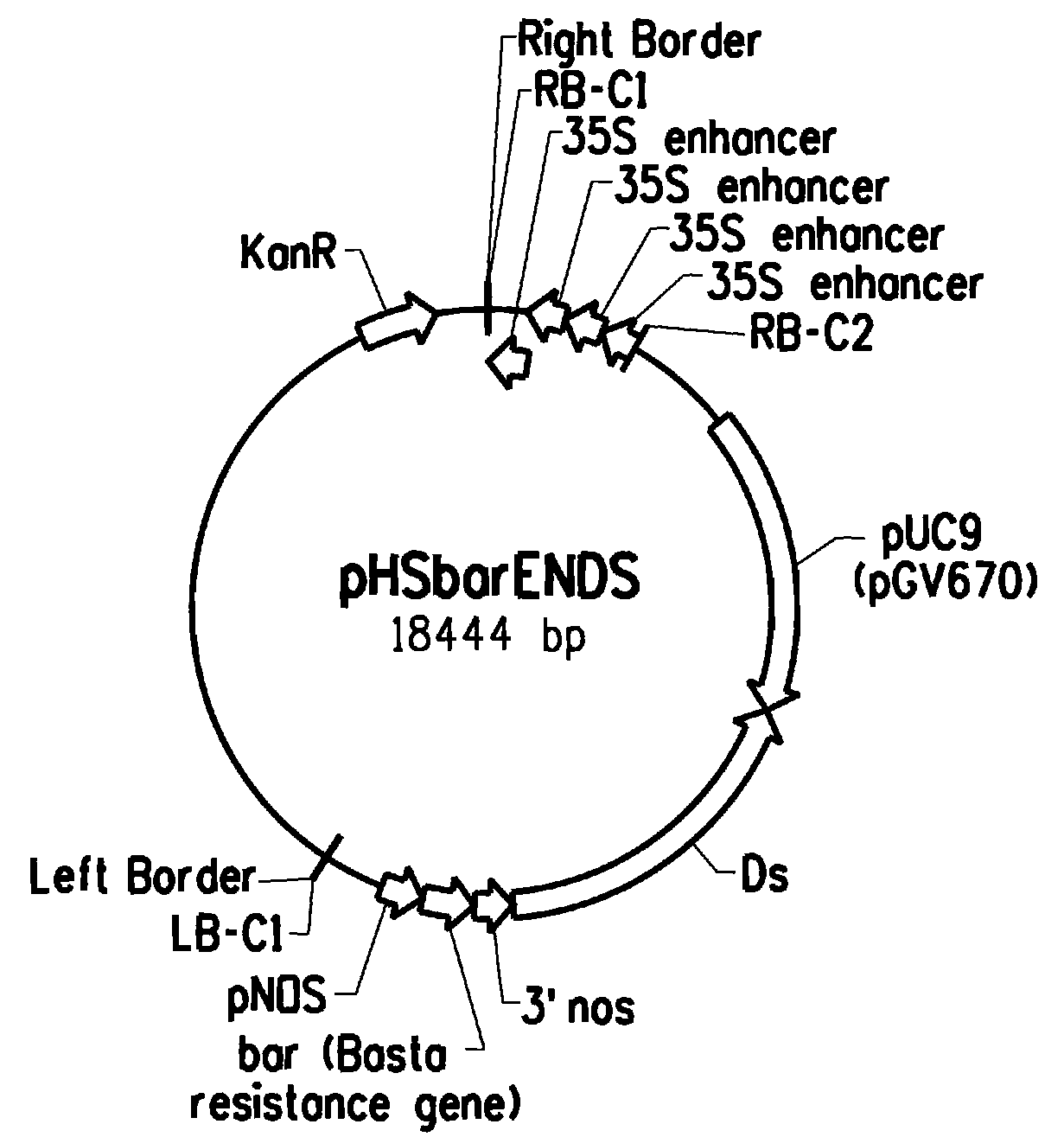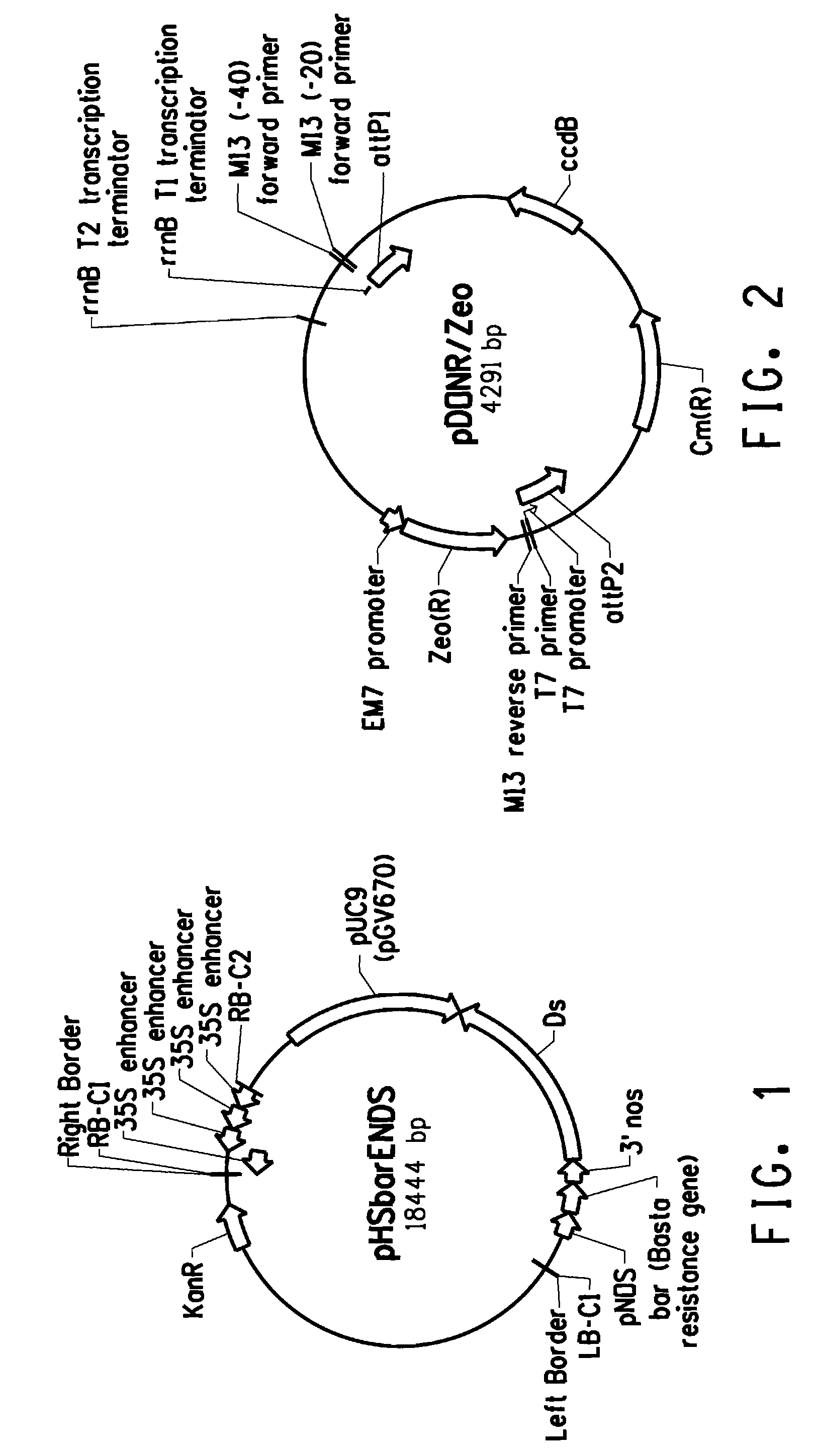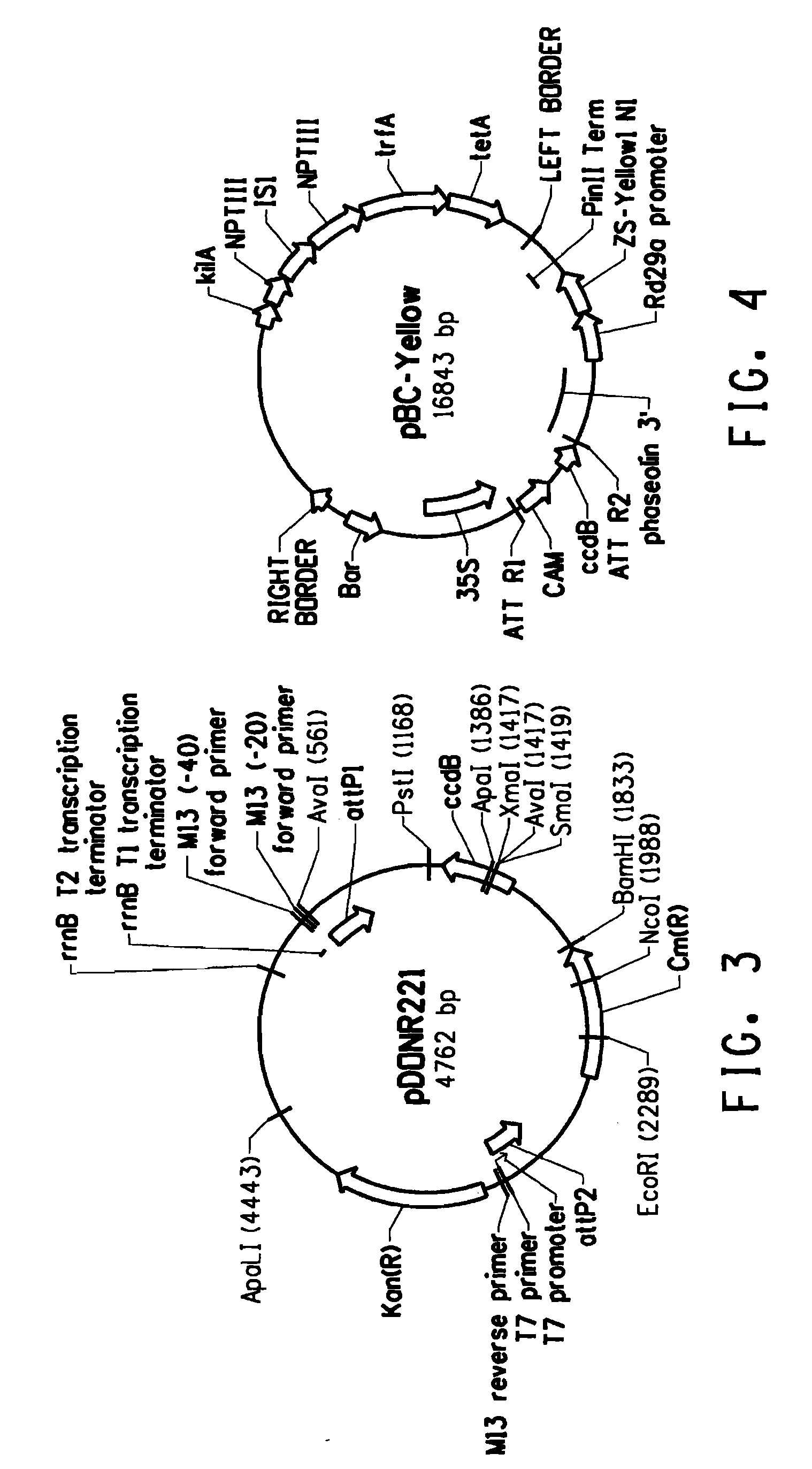Plants with altered root architecture, related constructs and methods involving genes encoding nucleoside diphosphatase kinase (NDK) polypeptides and homologs thereof
a technology of nucleoside diphosphatase and root structure, applied in the field of plant breeding and genetics, can solve the problems of limiting the growth of plants in all, limiting the yield of most agricultural ecosystems, and increasing the exploratory capacity of the root system through lateral root formation
- Summary
- Abstract
- Description
- Claims
- Application Information
AI Technical Summary
Benefits of technology
Problems solved by technology
Method used
Image
Examples
example 1
Creation of an Arabidolsis Population with Activation-Tagged Genes
[0297]A 18.4 kb T-DNA based binary construct was created, pHSbarENDs (FIG. 1; SEQ ID NO:1) containing four multimerized enhancer elements derived from the Cauliflower Mosaic Virus 35S promoter, corresponding to sequences −341 to −64, as defined by Odell et al. (1985) Nature 313:810-812. The construct also contains vector sequences (pUC9) to allow plasmid rescue, transposon sequences (Ds) to remobilize the T-DNA, and the bar gene to allow for glufosinate selection of transgenic plants. Only the 10.8 kb segment from the right border (RB) to left border (LB) inclusive will be transferred into the host plant genome. Since the enhancer elements are located near the RB, they can induce cis-activation of genomic loci following T-DNA integration.
[0298]The pHSbarENDs construct was transformed into Agrobacterium tumefaciens strain C58, grown in LB at 25° C. to OD600 ˜1.0. Cells were then pelleted by centrifugation and resuspend...
example 2a
Screens to Identify Lines with Altered Root Architecture (Non-Limiting Nitrogen Conditions)
[0301]Activation-tagged Arabidopsis seedlings, grown under non-limiting nitrogen conditions, can be analyzed for altered root system architecture when compared to control seedlings during early development from the population described in Example 1.
[0302]From each of 96,000 separate T1 activation-tagged lines, ten T2 seeds can be sterilized with chlorine gas and planted on petri plates containing the following medium: 0.5×N-Free Hoagland's, 60 mM KNO3, 0.1% sucrose, 1 mM MES and 1% Phytagel™. Typically 10 plates are placed in a rack. Plates are kept for three days at 4° C. to stratify seeds and then held vertically for 11 days at 22° C. light and 20° C. dark. Photoperiod is 16 h; 8 h dark, average light intensity was ˜180 μmol / m2 / s. Racks (typically holding 10 plates each) are rotated daily within each shelf. At day 14, plates are evaluated for seedling status, whole plate digital images were ...
example 2b
Identification of Mutant Lines with an Altered Root Phenotype in a Mutant Population (Limiting Nitrogen Conditions)
[0307]A two-step screening procedure can be used, comprising:
[0308](1) Identification of an altered root growth phenotype in a vertical plate assay;
[0309](2) Confirm herbicide resistance and root phenotype in rescued mutant lines;
The primary screen is based on vertical plates containing Nitrogen-free Hoagland salts, 0.3% sucrose and 1 mM KNO3. The media also contains 0.8%-1.0% PhytaGel as a gelling agent. Media with Phytagel at 1.0% is sometimes difficult to pour as it solidifies quickly, however, at below 0.8% the media will slide off plates when placed vertically. Mutants from an activation-tagged population where pools of 100 lines each are available for a total of 36000 lines are being screened. On each plate, 12 mutant and 2 wild type Columbia seeds are seeded. Plates are placed in a growth room with a constant temperature of 26° C., 16 hr-day cycle with an average...
PUM
| Property | Measurement | Unit |
|---|---|---|
| temperature | aaaaa | aaaaa |
| temperature | aaaaa | aaaaa |
| time | aaaaa | aaaaa |
Abstract
Description
Claims
Application Information
 Login to View More
Login to View More - R&D
- Intellectual Property
- Life Sciences
- Materials
- Tech Scout
- Unparalleled Data Quality
- Higher Quality Content
- 60% Fewer Hallucinations
Browse by: Latest US Patents, China's latest patents, Technical Efficacy Thesaurus, Application Domain, Technology Topic, Popular Technical Reports.
© 2025 PatSnap. All rights reserved.Legal|Privacy policy|Modern Slavery Act Transparency Statement|Sitemap|About US| Contact US: help@patsnap.com



